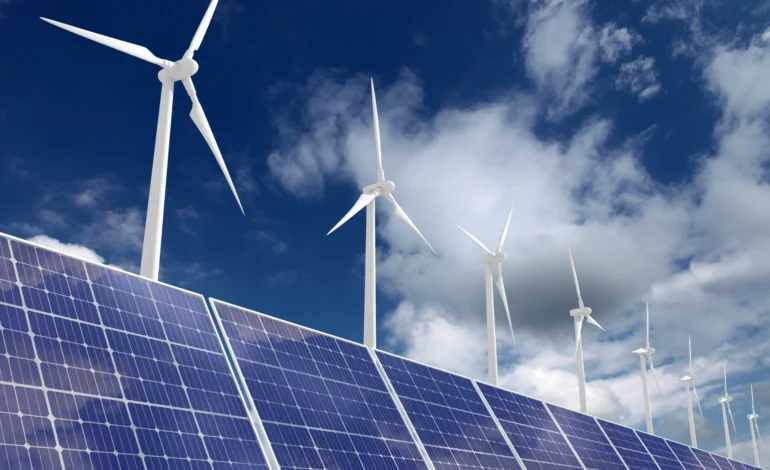
Energy Storage Breakthroughs: Overcoming Challenges in Renewable Integration
Hey there, energy enthusiasts! 🌞⚡ Today, we’re diving into a topic that’s buzzing with excitement and potential: energy storage breakthroughs and how they’re helping us overcome the challenges of integrating renewable energy into our power grids.
Renewable energy sources like solar and wind are fantastic—they’re clean, abundant, and essential for a sustainable future. However, they come with a significant challenge: intermittency. The sun doesn’t always shine, and the wind doesn’t always blow, making it tricky to rely on these sources for consistent power. That’s where energy storage comes into play. Let’s unpack this a bit, shall we?
The Inconsistency Issue
Assume your roof is equipped with solar panels. It produces more electricity than you use on a sunny day. But it doesn’t produce enough at night or on overcast days. In a similar vein, wind turbines produce essentially no power on calm days but a great deal on windy ones. It is challenging to balance supply and demand because of this irregularity.
The Role of Energy Storage
The batteries in your phone are similar to energy storage systems (ESS), however, ESS are larger and more sophisticated. To guarantee a consistent supply of power, they store excess energy produced during periods of peak production and release it during periods of low output. Effective integration of renewable energy into the grid depends on this delicate balancing act.
Types of Energy Storage Technologies
There are several types of energy storage technologies, each with its own strengths and weaknesses. Let’s explore some of the most promising ones:
1. Lithium-Ion Batteries
When it comes to energy storage, lithium-ion batteries are the most popular option. They are present in a wide range of products, including electric cars, large-scale energy storage systems, and smartphones. Why are they so well-liked?
- High Density: They can hold a lot of energy in a compact amount of area.
- Efficiency: The charge/discharge efficiency is good.
- Scalability: They can be applied to a variety of settings, ranging from modest home setups to substantial grid-scale deployments.
But they also have certain drawbacks:
- Cost: Although costs are declining, they are still somewhat pricey.
- Resource Availability: These batteries require a limited supply of lithium and other materials, which are occasionally obtained from areas with questionable labor standards.
2. Flow Batteries
Lithium-ion and flow batteries differ slightly from one another. Liquid electrolytes housed in exterior tanks serve as their energy storage devices. What makes them intriguing is as follows:
- Scalability: Adding more electrolyte tanks is a simple way to expand storage capacity.
- Long Lifespan: They don’t substantially deteriorate after a lot of charge and discharge cycles.
- Safety: Compared to lithium-ion batteries, they are less likely to catch fire.
The main drawback? They work better in situations where space is limited since they are less energy-dense and bulkier than lithium-ion batteries.
3. Solid-State Batteries
Traditional batteries use a liquid or gel electrolyte; solid-state batteries use a solid electrolyte instead. This invention has a number of benefits:
- Safety: There is a lower chance of overheating or fire.
- Energy Density: Compared to lithium-ion batteries, they offer a higher energy density.
- Longevity: They might be able to withstand more charge/discharge cycles and live longer.
Solid-state batteries have a lot of potential, even if they are still in the research and development stage.
4. Compressed Air Energy Storage (CAES)
By compressing air and storing it in huge subterranean caves, CAES systems store energy. The compressed air is released when power is required, turning a turbine to produce energy. Here’s why CAES makes sense:
- huge Scale: It is appropriate for energy storage on a huge scale.
- Longevity: The parts utilized are long-lasting.
- Cost-Effective: For large installations, it may be less expensive than battery storage.
However, the deployment of CAES systems is limited to areas with certain geological characteristics for subterranean storage.
5. Pumped Hydro Storage
One of the most established and traditional forms of energy storage is pumped hydro storage. When there is excess power, it pumps water from a lower reservoir to an upper reservoir. The water is let back down when power is required, turning turbines to produce electricity. Among the advantages are:
- Large Capacity: In terms of capacity, this is the most important energy storage technique.
- Efficiency: Its round-trip efficiency is comparatively high.
- Proven Technology: This technology has been around for a long time and is well-known.
The drawback? It needs particular topographical elements, such as hills or mountains, and may have an adverse effect on nearby ecosystems.
Recent Breakthroughs
The field of energy storage is seeing rapid change due to intriguing discoveries that have the potential to completely transform it. Let’s examine a few recent developments:
1. State-of-the-Art Battery Chemistry
Scientists are investigating novel battery chemistries that may provide enhanced efficiency at reduced expenses. As an illustration:
- Sodium-Ion Batteries: These substitute cheap, readily available sodium for lithium. They are far less expensive but use less energy.
- Lithium-Sulfur Batteries: These are lighter and have higher energy densities than conventional lithium-ion batteries, which makes them perfect for uses in electric airplanes, among other things.
2. Improved Manufacturing Techniques
Technological developments in manufacturing are bringing down the price of energy storage. For example, new techniques for manufacturing lithium-ion batteries are boosting yield and decreasing waste, which lowers the cost and increases the accessibility of batteries.
3. Grid-Scale Innovations
Innovative grid-scale energy storage technologies are being implemented by utilities, and they work in perfect harmony with renewable energy sources. As an illustration:
- Virtual Power Plants, or VPPs: These combine a number of small-scale storage systems into a unified, synchronized system that is capable of offering grid services.
- Advanced Grid Management Software: This program enhances the efficacy and efficiency of energy storage systems by optimizing their operation.
Overcoming Challenges
Despite these advancements, several challenges remain. Let’s discuss some of the key hurdles and how we’re overcoming them:
-
Cost
The primary obstacle to the extensive implementation of energy storage is still its cost. However, economies of scale and technical breakthroughs are causing prices to drop quickly. For example, over the last ten years, the price of lithium-ion batteries has decreased by around 90%, making them far more accessible.
-
Scalability
It is extremely difficult to scale energy storage to fulfill the needs of the entire system. But new technologies like CAES and flow batteries are opening the door to bigger, more effective storage systems.
-
Regulatory and Policy Support
Encouraging laws and policies are essential to the expansion of energy storage. Recognizing this, governments everywhere are taking action to promote investment in energy storage technologies. For instance, the EU has set high goals for the integration of renewable energy sources, while the US has implemented tax incentives for energy storage projects.
The Future of Energy Storage
Energy storage has a bright future. We could expect to see even more innovations that facilitate and improve the integration of renewable energy sources with sustained investment in research and development. Observe the following trends:
-
Hybrid Systems
Hybrid systems, which combine several energy storage methods, can provide the best of both worlds. For example, combining batteries and pumped hydro storage can offer large-scale capacity and excellent energy density.
-
Second-Life Batteries
Batteries from electric vehicles can have their useful lives extended and waste can be decreased by repurposing them for stationary energy storage. The more electric cars that are driven, the more popular this strategy is becoming.
-
Machine Learning and AI
Systems for energy storage are being optimized through the use of artificial intelligence and machine learning. By managing storage and discharge cycles, anticipating equipment problems, and predicting energy demand, these systems increase efficiency and dependability.
Conclusion
The secret to maximizing the promise of renewable energy is energy storage. We’re getting closer to a time when everyone will have access to clean, dependable, and reasonably priced energy thanks to amazing discoveries and creative solutions that are just around the corner. We are making great progress toward a robust and sustainable energy future by resolving the issues of intermittency and smoothly integrating renewable energy into our power networks.
So, here’s to the innovators, researchers, and policymakers driving this revolution forward. The road ahead is challenging, but with determination and ingenuity, we can power a brighter, greener future for everyone. 🌍💡
Got questions or thoughts about energy storage and renewable integration? Drop them in the comments below—We’d love to hear from you!





